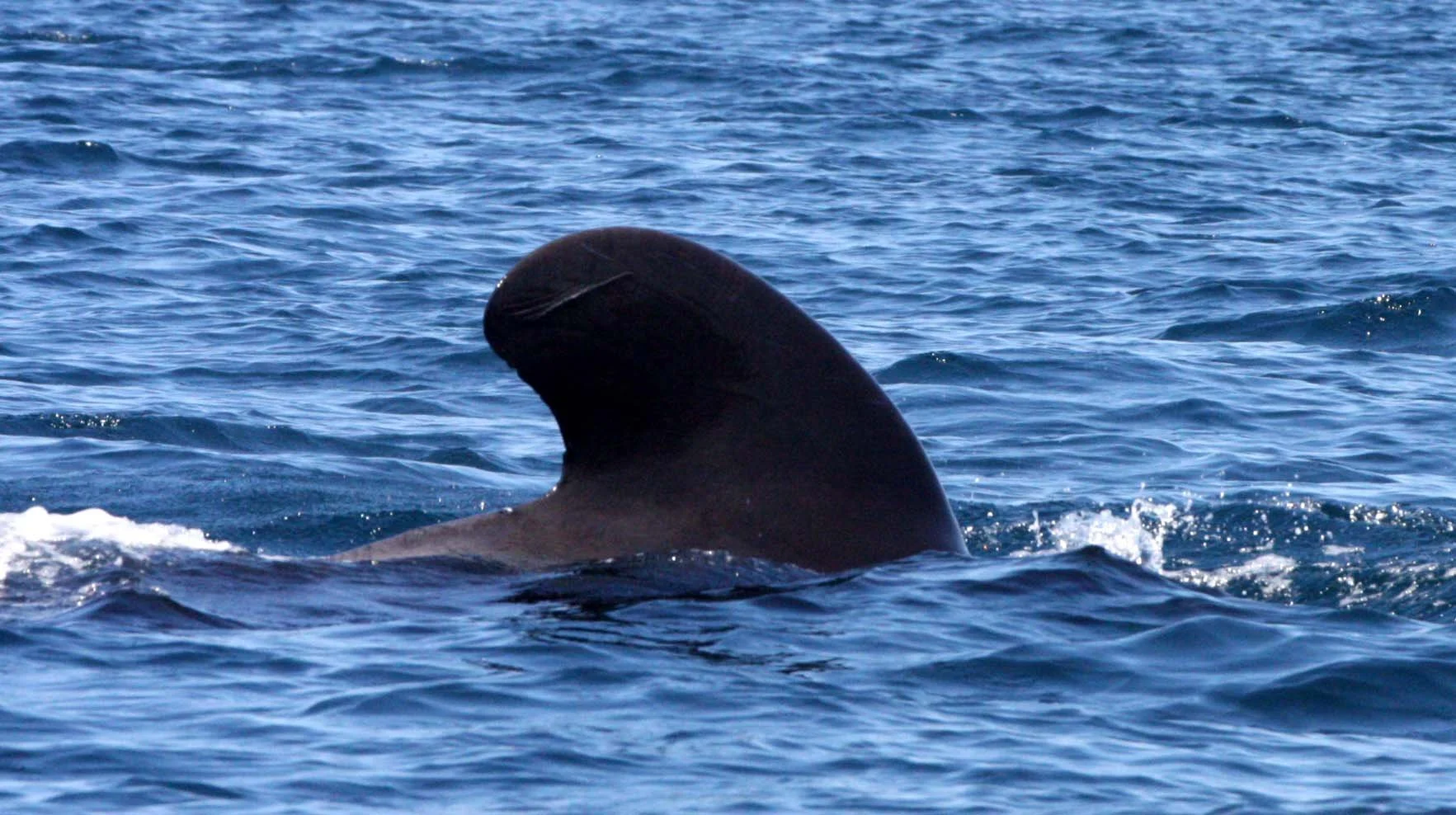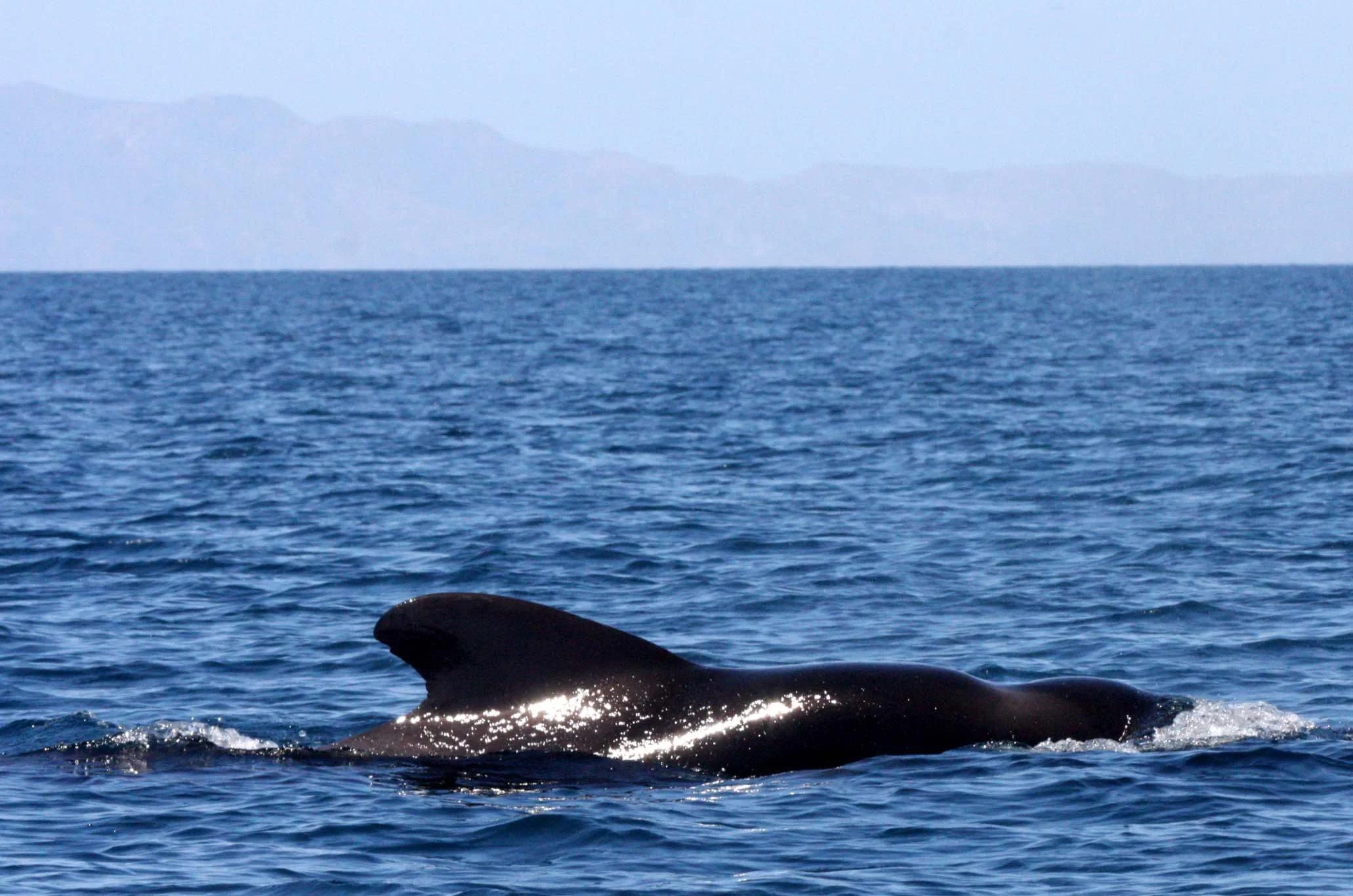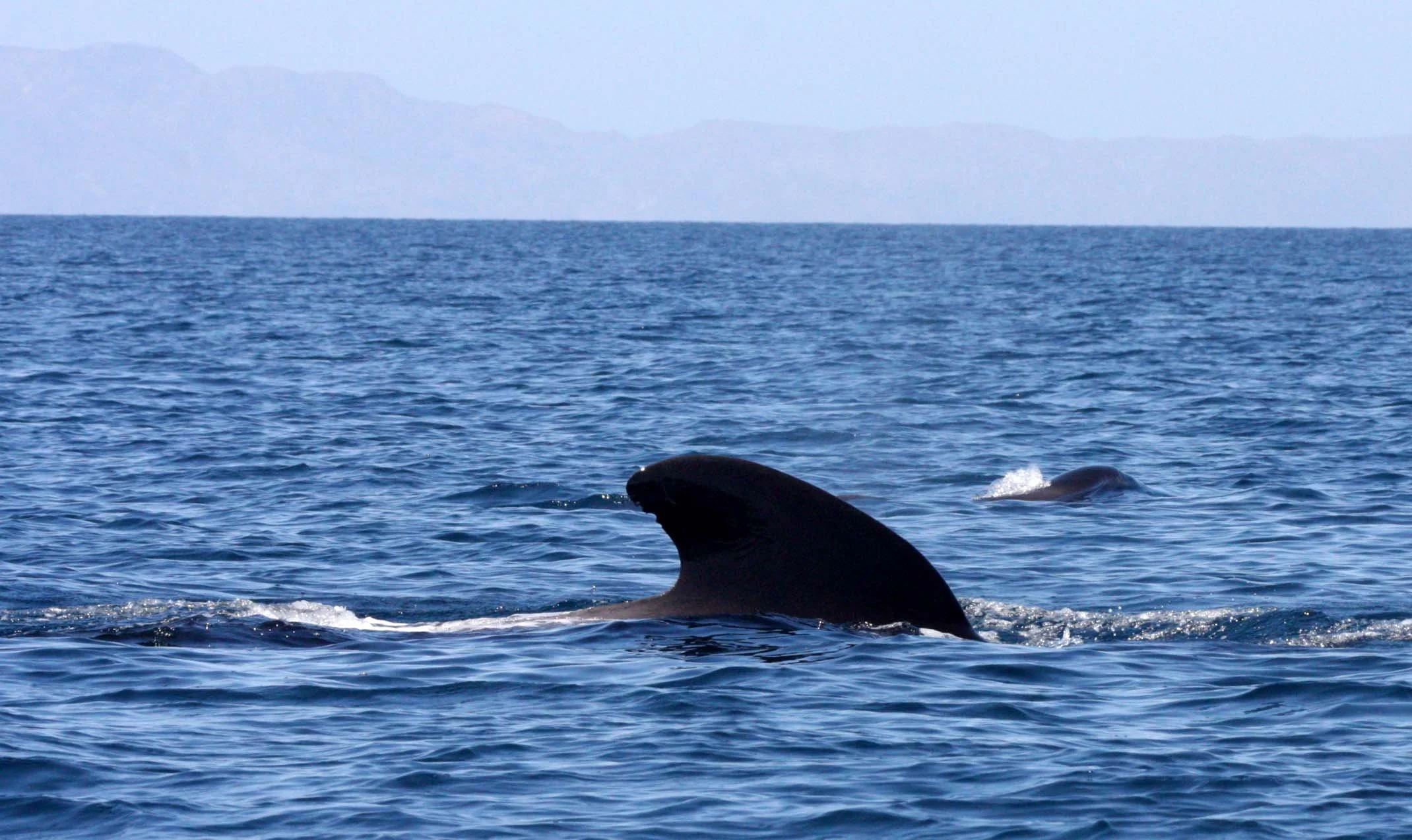The Short-finned Pilot Whale (Globicephala macrorhynchus) is one of the two species of cetaceans in the genus Globicephala, which it shares with the long-finned pilot whale (G. melas). It is part of the oceanic dolphin family (Delphinidae).
It has a worldwide distribution with a global population of about 700,000, and there may be 3 or 4 distinct populations—two in the Pacific and one in the Atlantic and Indian Oceans. Its range is moving northward due to global warming. In the Pacific, males average 4–6 m (13–20 ft) and females 3–5 m (9.8–16.4 ft). It generally has a stocky build with black to dark gray or brown skin, and can be distinguished from its counterpart by shorter flippers, fewer teeth, and a shorter beak. It is thought to pursue fast-moving squid typically at a depth of 700 m (2,300 ft), but the maximum recorded depth is 1,018 m (3,340 ft).
The short-finned pilot whale has been reported as being highly playful and social. It typically travels in pods of 10–30 members, usually family, but has been observed moving in groups of several hundred. Like killer whales, it has a matrilineal social hierarchy with an elder female at the head and a sizable post-reproductive lifespan. It is polygynous; females often outnumber males 8:1 in a pod.
Pods are known to mass strand, possibly due to sheer accident, biosonars confused by geomagnetic anomalies, injury from loud military sonar, or disease. It was historically whaled, and is still whaled today by Japan and the Lesser Antilles, but it is protected by several international treaties.
This gallery has images from the Sea of Cortez off Loreto Baja Mexico



























































































































































